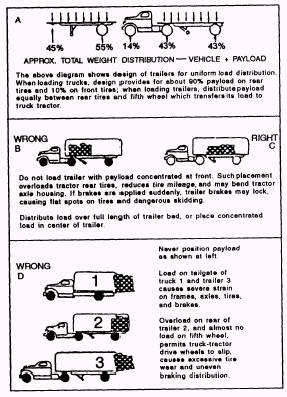
With a trailer in tow the tow vehicle’s damping ratio actually improved, but the trailer showed a damping ratio that ranged from 0.3 at 37mph (60km/h) and crossed into the negative at 71mph (112km/h).

Up to 100mph (160km/h) and beyond, the tow vehicle had a damping ratio ranging from 1-0.5 – quite stable.

The Delphi study looked at variables, including the centre of mass, axle placement and vehicle speed, and calculated if the trailer was likely to sway. The predictions also noted and at what speed it was a decaying oscillation (taking care of itself) or an exponential oscillation (building to an accident).įirstly, they assessed the stability of the tow vehicle, described by a dampening ratio, which when positive meant stability (decaying oscillations) and a negative damping ratio meant the opposite. That’s faster than trailer towing in any other country, which is why American-market towing vehicles have conservative towing ratings.Īlso, as the Delphi study showed, heavier towball weights are necessary at 130km/h and above.

Towing speed limits differ across the USA, but vehicle and trailer designers must assume the highest legal speed is their target and that is between 65mph and 80mph (105km/h and 130km/h). If you buy a Toyota or Subaru, for example, in the USA you’ll find that the trailer rating is much lower than it is in Europe or in Australia – around half – and the reason is mostly to do with road speed. These findings explain why the Yanks get lower trailer-towing ratings for globally available vehicles and why they insist on 10-15-percent ball weight. Published research on the ball weight topic is very hard to find, but we’ve managed to dig up some US calculations and real-world testing done in 2008 by Delphi and published by the SAE. Why the difference, given that trailers and towing vehicles are pretty much global vehicles these days? In Europe it’s an entirely different story: the typical EEC car and 4WD towball load is between 50kg and 75kg, and even heavy trailers – above 3500kg – have towball loads around 100kg. In the case of a 2000kg trailer that means a towball load of 200kg to 300kg. In North America virtually all trailer and caravan makers endorse the 10-percent rule and some go so far as to suggest the towball load should be as high as 15 percent.

The purpose of this percentage is manifold: guaranteeing that the trailer won’t lift the rear wheels of the towing vehicle under acceleration or when climbing a steep grade ensuring that the trailer tracks accurately behind the towing vehicle and preventing trailer sway. Why do the Aussies and Yanks insist on 10-15-percent towball weight, while the Europeans are content with around six percent? Towing speed is the main reason for the difference and that makes the Australian practice something of a misfit.


 0 kommentar(er)
0 kommentar(er)
